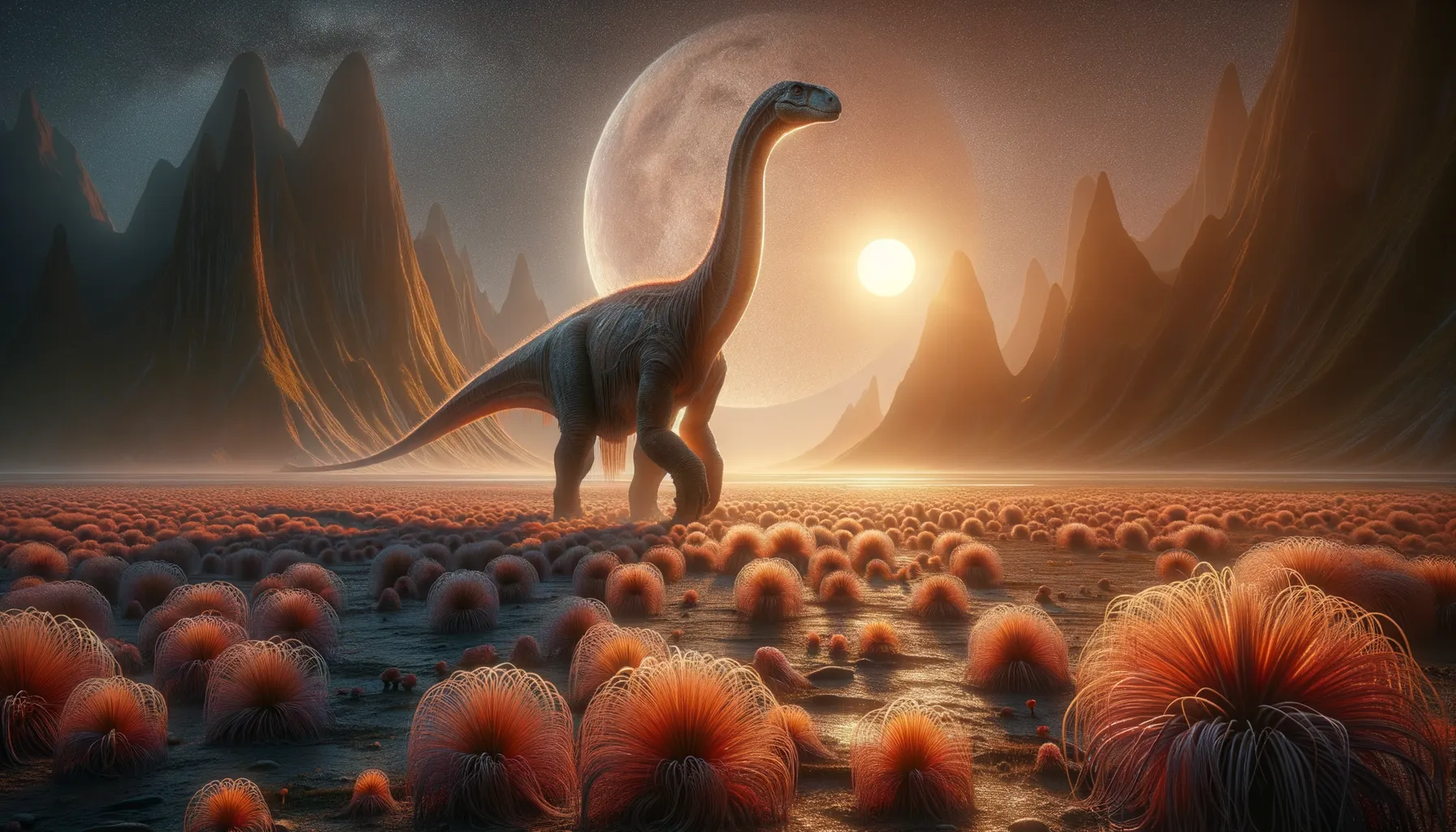
Qiaowanlong
The gentle giant of ancient China.
Period
Cretaceous
Length
Estimated at around 12 meters long.
Height
Around 2 meters tall at the shoulder.
Weight
Approximately 2,000 kilograms.
Qiaowanlong was a long-necked dinosaur belonging to the brachiosaurid group, living during the Early Cretaceous period. It roamed the region that is now China approximately 115 million years ago. Known for its distinctive skeletal features, Qiaowanlong contributes to our understanding of sauropod diversity in Asia. Its discovery has provided scientists with valuable insights into the distribution and evolution of brachiosaurid dinosaurs in this part of the world.
Diet
Qiaowanlong was herbivorous, feeding primarily on the lush vegetation that was abundant during the Cretaceous period. Its long neck allowed it to reach leaves and branches high up in trees, as well as ground foliage.
Hunting
As a herbivore, Qiaowanlong did not engage in hunting but instead focused on grazing. Its feeding habits involved stripping leaves from branches using its peg-like teeth.
Environmental challenges
During its time, Qiaowanlong faced environmental challenges such as seasonal variations that affected vegetation growth. It had to adapt to changes in plant availability due to dry and wet cycles. Predators also posed a threat, and it relied on its size for protection against carnivorous dinosaurs.
Speed
Moderate due to its large size.
Lifespan
Estimated around 30 to 40 years.
First discovery
Discovered in Gansu Province, China, in 2008.
Fun Facts
- Qiaowanlong is known from fossils discovered in the Ningxia region of China.
- It lived during the Early Cretaceous period, about 100 to 145 million years ago.
- Qiaowanlong is part of the sauropod family, which includes some of the largest dinosaurs.
- Despite being a sauropod, it was relatively small, with an estimated length of around 12 meters.
- The name Qiaowanlong means 'Bridge-bay dragon' in reference to the location where its fossils were found.
- Qiaowanlong had long neck vertebrae, which suggests it probably browsed for food in the trees.
- It provides valuable insights into the evolution and distribution of early long-necked dinosaurs in Asia.
Growth and Development
Qiaowanlong likely experienced rapid growth during its early years, similar to other sauropods. This rapid development helped young dinosaurs reach sizes where they were less vulnerable to predators. Over time, growth slowed as they approached their maximum size.
Habitat
Qiaowanlong lived in a relatively warm climate, with habitats consisting of open forests and floodplains. These areas provided plenty of food resources and water sources, essential for this large herbivore. The environment supported a diverse ecosystem with various plant and animal species.
Interaction with other species
Qiaowanlong coexisted with various other dinosaur species, both herbivores and carnivores. While larger carnivores might have posed a threat, Qiaowanlong likely lived in groups as a defense mechanism. Its presence played a role in shaping the plant life through its feeding patterns.
Natural lifespan
Qiaowanlong had a natural lifespan of 30 to 40 years.
Reproduction
Qiaowanlong reproduced by laying eggs, which were likely buried in nests to incubate. Given its size, communal nesting sites may have provided young hatchlings with some protection. The young would have had to grow quickly to avoid predation.
Social behaviour
Qiaowanlong may have displayed herd behavior, as many sauropods did, providing safety in numbers. Social structures could have included adult dinosaurs watching over the young. Communication within the group might have been through vocalizations or visual signals.
Fossil locations
Fossils of Qiaowanlong have mainly been found in the Xinminpu Group in Gansu Province, China. The discovery site has provided important information for understanding early Cretaceous ecosystems. Fossil evidence has been crucial for reconstructing the appearance and lifestyle of this dinosaur species.
